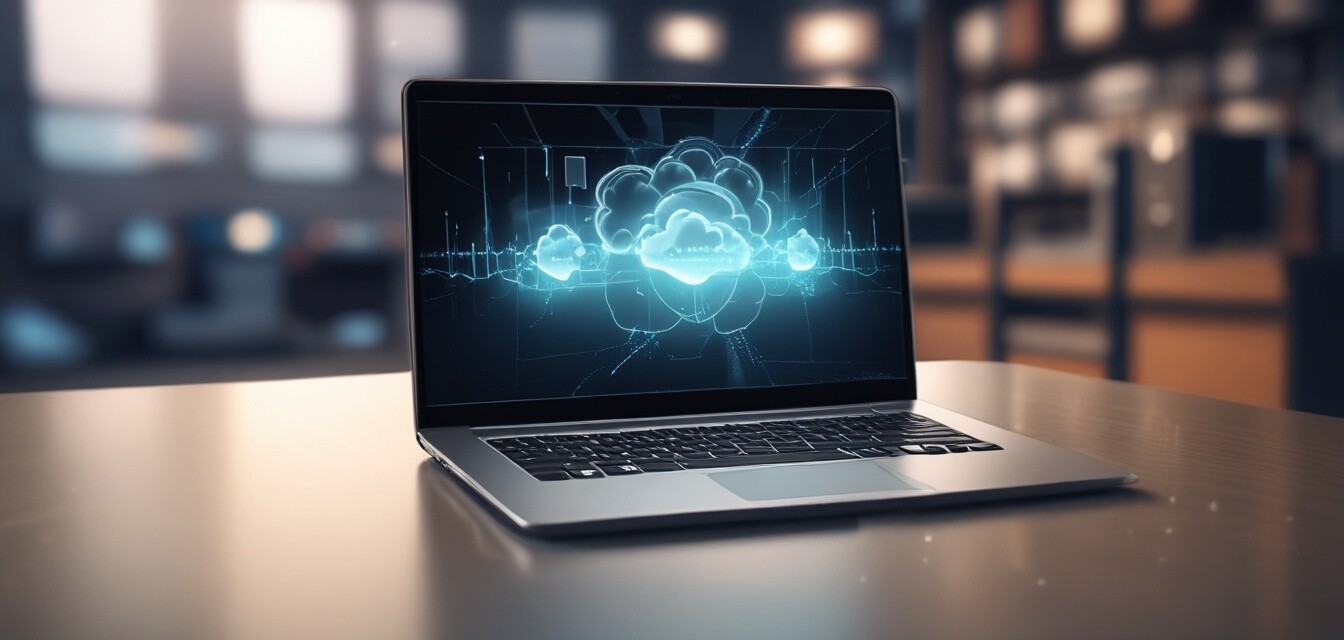
The Rise of Cloud Computing and Its Impact on Laptops
Key Takeaways
- Cloud computing has revolutionized how laptops are designed and function.
- Modern laptops prioritize cloud connectivity, storage, and processing power.
- Users enjoy increased flexibility and enhanced functionality through cloud services.
- Understanding the different types of cloud services can improve user experiences.
In recent years, cloud computing has rapidly gained traction, significantly affecting how we use laptops. This technology has transformed not only the functionality of portable devices but also the overall user experience. Let's delve deeper into how cloud computing is influencing the design and functionality of modern laptops.
What is Cloud Computing?
Cloud computing refers to delivering various services over the internet, including data storage, servers, databases, networking, software, and analytics. Instead of relying on a local server or personal computer to store and manage data, users can access information remotely, leading to enhanced flexibility and functionality.
Impact of Cloud Computing on Laptop Design
As cloud computing continues to evolve, laptop manufacturers are increasingly adapting their designs to accommodate it. The following points illustrate how laptops are changing in response to this technological shift:
- Lightweight and Portable: With decreased reliance on internal storage, laptops are being designed to be lighter and more portable.
- Improved Connectivity: Modern laptops prioritize Wi-Fi connectivity and are often equipped with the latest technology to ensure smooth cloud integration.
- Longer Battery Life: As cloud applications often run on servers, local processing needs decrease, allowing for optimized battery usage and longer-lasting devices.
Cloud-Based Applications and Features
Cloud computing has introduced several applications that enhance laptop functionality, such as:
| Application | Description |
|---|---|
| Document Collaboration Tools | Allows users to work on documents simultaneously in real time, increasing productivity. |
| Cloud Gaming | Enables gaming on-demand without the need for powerful hardware by streaming games directly from the cloud. |
| File Backup and Storage | Automatically backs up files to cloud storage, ensuring data safety and accessibility. |
Types of Cloud Services
Understanding the types of cloud services is essential for maximizing their benefits. Here are the three primary types:
- Infrastructure as a Service (IaaS): Provides virtualized computing resources over the internet.
- Platform as a Service (PaaS): Delivers hardware and software tools over the internet, facilitating application development.
- Software as a Service (SaaS): Offers software applications via the cloud, accessible through browsers without the need for installation.
User Experiences Enhanced by Cloud Computing
Cloud computing is reshaping the way users interact with their laptops, providing improved experiences in several ways:
- Accessibility: Users can access files and applications from any device with an internet connection.
- Collaboration: Enhanced collaboration features enable groups to work together seamlessly, fostering teamwork.
- Cost-efficiency: Reduced need for high-powered hardware decreases overall costs for users and businesses.
Future Trends in Cloud Computing and Laptop Integration
As technology continues to advance, the integration of cloud computing in laptops will likely grow. Here are some trends to keep an eye on:
- Increased automation in cloud management tools leading to user-friendly experiences.
- Further development of security features ensuring user data remains protected in cloud environments.
- Expansion of edge computing, enhancing real-time data processing capabilities.
The Role of Artificial Intelligence
Artificial intelligence is becoming a pivotal part of cloud computing, optimizing how laptops operate by predicting user needs and preferences. This could lead to highly personalized experiences that learn and adapt to individual usage patterns.
Pros
- Increased flexibility and accessibility to data and applications
- Reduced hardware costs for users
- Enhanced collaboration tools for teams
Cons
- Dependence on internet connectivity
- Potential data security concerns
- Possible compatibility issues with certain software
Conclusion
The rise of cloud computing is undeniably reshaping the landscape of modern laptops, enhancing design and functionality significantly. Users benefit from improved experiences characterized by increased accessibility, collaboration, and cost-efficiency. As technology continues to evolve, staying abreast of the latest trends in cloud computing is essential. To further explore related insights, check out our buying guides or visit our news section for more updates on the latest trends in technology.
Cloud computing is not just a buzzword—it’s a crucial aspect of today's computing landscape, promising a future where laptops continue to evolve, leveraging cloud technologies to offer richer, more effective user experiences.